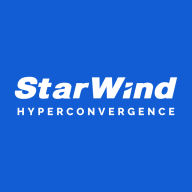

StarWind Virtual SAN and Dell vSAN Ready Nodes compete in the virtual SAN solutions category. StarWind seems to have the upper hand due to its cost-effectiveness and ease of integration with existing infrastructure.
Features: StarWind Virtual SAN offers active-active high availability, integration with Microsoft clustering, and versatile compatibility with commodity hardware. Dell vSAN Ready Nodes are noted for their performance and flexibility with seamless file sharing and consolidated storage management through vSAN.
Room for Improvement: StarWind could enhance documentation for iSCSI management and streamline the upgrade process. Dell vSAN Ready Nodes face issues with scalability, high initial prices, and limited flexibility, with further automation and competitive pricing being suggested improvements.
Ease of Deployment and Customer Service: StarWind's deployment is straightforward with commendable support, ensuring a smooth experience. Dell vSAN Ready Nodes also provide strong customer service, though the setup process can be complex compared to StarWind's setup ease.
Pricing and ROI: StarWind offers a more affordable pricing model with significant cost savings on setup, providing a quicker ROI. Dell vSAN Ready Nodes, while offering potentially higher ROI due to reduced downtime, involve higher initial costs, making StarWind the more budget-friendly option.
The OPEX benefits are around 30 to 40% because the same engineer who manages vSphere can handle Dell vSAN Ready Nodes, eliminating the need for additional support engineers.
We don't sell a lot of redundant servers, so it's not a massive ROI, but the ability to rely on their technical support and the software's ease of setup allows us to reduce labor costs and go to market competitively.
The cost benefits, as far as we consider, are much better with a StarWind VSAN solution, and the training requirements with the ease of administration simplify and reduce our administrator and professional services costs.
Regarding cost savings, for my client, it was about 20K USD for his specific use and as for extending capacity, StarWind made that process easy.
There is always room for improvement in terms of response time and reaching knowledgeable staff quickly.
Whether we have pro support plus or just the basic level, they are helpful and reliable as long as we provide the necessary details.
If we require a replacement part, the engagement is usually within four hours
Even in the instances where my technical team does not have the ability to manage or troubleshoot or resolve an issue, StarWind's technical team supports and resolves on our behalf very quickly.
They have some awesome guides online that show you exactly how to configure the product, how to do the initial setup, and you can speak with them directly who will be able to connect, verify your setup, run its parameters, and see exactly what's working and what is not, and adjust it, and they really help you with that.
When we set it up, they validate our settings and configurations to ensure we don't miss anything.
With VCF we have significant automation built-in within the VCF console within SDDC manager as the primary management console.
I would rate scalability around seven because when customers want to expand capacity but all the drive slots are full, they are forced to buy new servers or nodes which adds more costs with licenses and hardware.
I believe that scalability should be further improved, especially considering the possibility that environments may grow exponentially.
I have never needed to scale up or add additional nodes with StarWind Virtual SAN, but we have had to expand, and customer support has been excellent.
StarWind Virtual SAN's scalability is good, and I have had an easy experience adding more space to the system.
A disk group for five disks can be problematic, and customers need to tolerate downtime if the disk is not available.
In my experience, StarWind Virtual SAN is very stable, and I have never had a single instability issue.
It has been working for five years and the customer is still happy with it.
I ran it on a two-node Hyper-V cluster setup, and I didn't experience any unexpected crashes or major issues.
A faster firmware lifecycle with the release of validated firmware catalogs more quickly would be a desired improvement.
Dell vSAN Ready Nodes are useful as a product, but the lack of expansion with VMware has led customers to refrain from further upgrades.
I would want VMware to ensure that when there's a hardware failure on a host, it should gracefully migrate the VMs to another host available in the cluster without restarting, which would be a great improvement.
A more intuitive interface or an improved dashboard for monitoring the cluster would also be helpful, as it would facilitate performance tracking and help identify potential issues before they affect services.
There have been cases where not understanding exactly what's failing on the Virtual SAN has been an issue.
Limited feedback in the management GUI is the main area where I would like to see StarWind Virtual SAN get better.
As a group under Comcast, we receive very good pricing from Dell due to our considerable business dealings.
The costs are acceptable and very competitive compared to other hardware-only HCI solutions.
I talked to the sales team, they gave me a quote with a perpetual license with the support and everything went through smoothly.
My experience with pricing, setup cost, and licensing was that it was easy to implement, license, and the cost was very good.
The ability for single-team management without requiring a separate storage team for managing arrays and fiber channel switches is also a valuable feature.
It is stable, and similar to any issues on a standalone machine, there's resilience; if we lose one host, data will not be lost because of the technology on vSAN that allows us to free up that host into maintenance mode without issues.
Second is the storage policies, with different flavors available all within a single management console when we want to configure different sets of policies as per workload requirements.
Thanks to its seamless integration with Proxmox, the implementation of high availability servers has drastically reduced downtime, which is crucial for our security-focused company.
StarWind Virtual SAN helps us keep customer satisfaction and provides the solutions we need without having to hire many IT specialists.
StarWind's storage virtualization and failover capabilities have made a difference for my clusters through uptime improvements, with zero downtime specific to server host maintenance or even maintenance of the StarWind software itself.
| Product | Market Share (%) |
|---|---|
| StarWind Virtual SAN | 2.0% |
| Dell vSAN Ready Nodes | 2.9% |
| Other | 95.1% |


| Company Size | Count |
|---|---|
| Small Business | 7 |
| Midsize Enterprise | 3 |
| Large Enterprise | 11 |
| Company Size | Count |
|---|---|
| Small Business | 160 |
| Midsize Enterprise | 54 |
| Large Enterprise | 33 |
Dell EMC vSAN Ready Nodes are pre-configured building blocks that reduce deployment
risks with certified configurations, improve storage efficiency by up to 50%1
, and can help
you build or scale your vSAN cluster faster.14 Whether you're just getting started, and/or
expanding your existing VMware environment, Dell EMC is here for you every step of the
way with consulting, education, deployment and support services for the entire solution.
StarWind Virtual SAN provides high availability and fault tolerance for virtualized environments without the need for dedicated SAN hardware. It allows for real-time replication between servers, shared storage for Hyper-V clusters, and enables vMotion and High Availability features for VMware vSphere. The solution reduces costs and leverages existing hardware while providing a scalable and reliable infrastructure. Valuable features include ease of use, scalability, top-tier support, hardware agnosticism, and the ability to use off-the-shelf standard servers to increase storage space. StarWind VSAN has helped organizations improve performance, data availability, and data security while reducing downtime and providing cost-saving storage options.
We monitor all HCI reviews to prevent fraudulent reviews and keep review quality high. We do not post reviews by company employees or direct competitors. We validate each review for authenticity via cross-reference with LinkedIn, and personal follow-up with the reviewer when necessary.